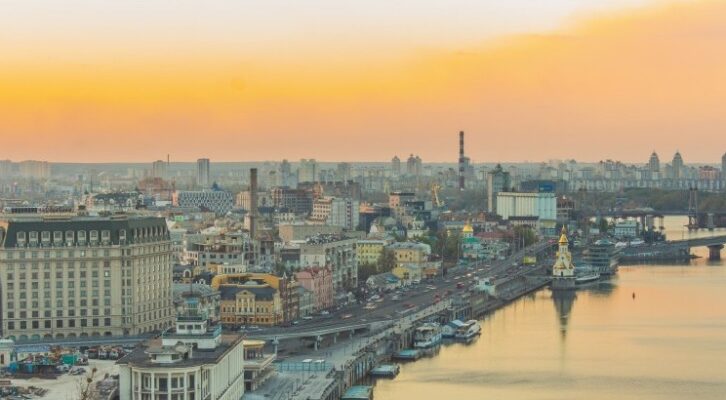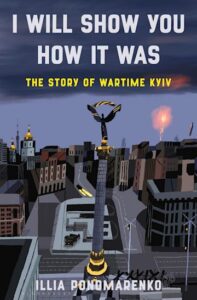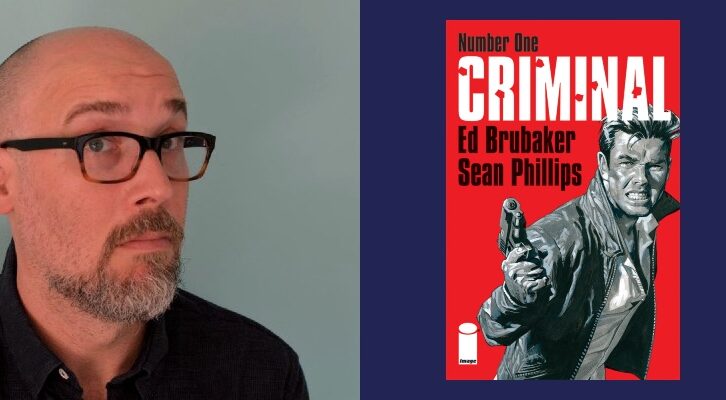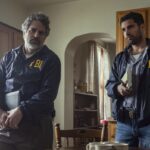
The View From Kyiv: How Ukraine Confronted the Looming Threat of War
Illia Ponomarenko on the Days Leading Up to Russia’s Invasion
It’s December 17, 2021, the high peak of the Christmas season. From the distance of months, those days now seem such a time. Life was good. The city was full of light, and it was breathing fun and business.
Back in those days, we at the Kyiv Independent, a brand-new media outlet of our own creation, did not even have an editorial office.
In our first weeks, we had no money. But we quickly got going on a website and a newsletter. Without an office, we knocked about and held editorial meetings at cafes or co-working spaces or wrote our stories from home. This was the “nomadic period” of our business venture, when stories were born wherever we could sit down and place a laptop on our knees.
The Kyiv Independent needs a story. Something rather weird has happened beyond this tiny world of soft piano music and holiday lights.
“Kremlin drafts pacts to limit Western influence in post-Soviet countries,” I type, drafting a working headline on my laptop. “Amid the ongoing security crisis, Moscow has suggested a grand agreement with the West that de facto aims to reinstate its Cold War time exclusive sphere of influence in Eastern Europe and also prevent Ukraine from ever joining NATO,” I write.
“After voicing a series of public demands and holding negotiations with Western leaders, the Russian foreign affairs ministry published two draft pacts on Dec. 17, offering to sign one with the United States and the other one with NATO.
As if it had just won a major regional war, Russia was literally and openly trying to impose a new order in Europe.
“The Kremlin’s move came following months of tensions that skyrocketed when Moscow amassed nearly 100,000 troops surrounding Ukraine in November. Western and Ukrainian intelligence assess Russia’s actions as a threat of an all-out invasion of Ukraine.”
Amid ongoing rumors, Russia’s foreign ministry published the draft pacts on its website.
Two days before publication, the document was handed over to United States Assistant Secretary of State Karen Donfried.
And that was one hell of a read.
As if it had just won a major regional war, Russia was literally and openly trying to impose a new order in Europe.
First, a “draft treaty” for NATO. Or, to be more precise, a set of demands substantiated by nothing but the Kremlin’s demonstrative and provocative overconfidence. In black and white, Moscow simply demanded that NATO terminate all military activities and buildup within a Russian comfort zone.
The boundaries of this comfort zone were very loosely outlined, reaching far beyond Russia’s internationally recognized borders. And it stated that both sides must avoid situations that might be deemed “national security threats.”
Moreover—and this was the most brazen bullet point—Moscow insisted that member states that had joined the NATO alliance after May 27, 1997, must now withdraw all military capabilities throughout Europe except for those that had already been deployed prior to that day.
This was presumably referencing the Founding Act on Mutual Relations, Cooperation and Security, a road map for NATO-Russia cooperation signed nearly twenty-five years earlier. Basically, what they were demanding was that NATO’s key military allies, such as the United States, the United Kingdom, and France, get out of all former Warsaw Pact nations.
And of course, NATO was supposed to formally disavow accepting any new member states, specifically Ukraine. And to not carry out any military activities, such as joint military exercises, in Eastern Europe, the Caucasian region, or Central Asia. Moreover, Moscow said both sides must define a certain broad zone within which there could be no military drills and maneuvers at a level higher than that of a combined arms brigade. But hey—as a gesture of peace and a nod to the Cuban Missile Crisis of 1962, Moscow suggested that a Cold War-style hotline be established to ensure direct communication between NATO and the Kremlin.
The pact also said Russia and NATO must not deploy ground-based, short- and medium-range missile systems in areas from which they would be capable of striking the other side.
Second: the list of demands to the United States.
These largely duplicated the “draft treaty” with NATO. Presenting the United States as the real puppet master behind the alliance, Moscow demanded that Washington formally promise not to accept any new NATO member states, specifically the nations that used to be part of the Soviet Union.
Also, the United States was supposed to forget about any new military bases in former Soviet states that had not already joined NATO (yes, Ukraine and Georgia), and they were not to use their military infrastructure for any military activities, or even have any bilateral military cooperation.
The “draft treaty” again said Russia and the United States must abstain from activities that could be considered “threats to national security.” The right to veto any activity Russia didn’t like applied to large and vaguely defined swaths of the globe—in other words, wherever the Kremlin saw fit at a moment.
Both sides were to abstain from deploying strategic bombers or warships in any area beyond their respective national borders, where they might be capable of striking each other’s territories.
For some reason, the United States Air Force Global Strike Command and the United States Navy were to severely curtail their presence and activities around the world, especially in Europe and Asia, and even Alaska. This would of course make room for the far weaker Russian Air Force and Navy, granting them dominance in the post-Soviet region.
Something similar was to happen to all United States nuclear weapons deployed beyond American soil—they all must be dismantled and sent home. That included an estimated two hundred air-dropped nuclear bombs still stored in Germany, Italy, Turkey, and Belgium, the Cold War remnants. Tellingly, this did not include nuke-carrying submarines plying the ocean, of which Russia has many.
Russia, for its part, was to give nothing in return. For decades, it hadn’t had any nuclear weapons deployed beyond its national borders, except for ocean submarines, part of its much-vaunted global nuclear triad.
The message was: Get out of what we now declare our exclusive influence zone.
And we don’t care that it’s not 1953 anymore. And we are not even close to being in a position or have the right to issue such demands. And in the world of 2021, such a pact would mean ditching decades of post-Cold War history and ignoring the will of multiple nations that have joined NATO or were hoping to do so.
The Kremlin presented the situation as if NATO and the United States, suddenly, owed it a new Yalta Conference, at which they were supposed to partition Europe, again.
Get out of our way to all-out revanchism, especially when it comes to Ukraine, or else.
Of course, that was a knowingly impossible ultimatum.
As former United States ambassador to Russia Michael McFaul very correctly stated at the time, Russia was simply issuing bold, unilateral demands. It did not suggest its own withdrawal from Transnistria, or Abkhazia and South Ossetia, or Crimea and East Ukraine.
It did not promise to withdraw its nuclear-carrying Iskander missile systems from Kaliningrad Oblast that were pointing at the heart of Europe. And it did not promise to stop its assassinations or cease supporting antidemocratic forces in the West or the wayward regime of Aleksandr Lukashenko of Belarus.
And it was concentrating a one-hundred-thousand-strong invasion force against Ukraine. For the second time in 2021.
Was it trying to extort new concessions from the West?
Or, as the Wall Street Journal said then, was it possible that the Kremlin never intended to pursue any negotiations and that it might simply be setting up a grand casus belli if these absurd demands were not met?
The West was trying to stay diplomatic and careful, as usual.
“Jen Psaki, the White House spokesperson, reportedly confirmed United States officials had been informed on the suggested pacts and were to discuss them with the European allies.”
“We will not compromise the key principles on which European security is built, including that all countries have the right to decide their own future and foreign policy, free from outside interference.
However, she said there was no reason to believe that the United States and Russia would not be able to find a common ground and reach a security agreement the way the two powers used to in the previous decades.”
All right, the article is done. Sent to an editor.
*
This city is something special.
It’s about everything it has seen in well over twelve hundred years of its history. It’s a mixture of god-awful Soviet panel buildings, traces of its ancient glory as the capital of Kyivan Rus, the Stalinist gravitas, the Russian Empire, and the insane mayhem of commercial development of our times.
Kyiv has risen to preeminent glory and then been kicked to the bottom of the heap. It has been the coveted prize of princes, tsars, khans, and dictators. It has been burned to ashes several times and has completely changed its face over the centuries.
It has been the heart of the Slavic kingdom stretching from the White Sea to the Black Sea, and it has been reduced to an insignificant crossroads that had to wait seven hundred years to rise again.
Kyiv is “the New Jerusalem,” home to thousand-year-old monumental cathedrals and monasteries, where Eastern Christianity was introduced.
The hills overlooking the Podil and the Dnipro riverside, with all the remains of the ancient walls and defensive ditches, are where so many things from history textbooks actually happened. In the world of eastern Slavic nations, Kyiv is just like Rome to Western Europe—the place where it all began.
No wonder Vladimir Putin wanted Kyiv for his twenty-first-century imperialistic spree. Moscow spent centuries monopolizing the legacy of Kyivan Rus and even religiously positioning itself over the sanctuaries of Kyiv, but nope. The ancient capital would prove its mettle.
Kyiv is a weird place in many ways.
Today it’s also a mixture of everything that Ukraine is. In its streets, you can hear Russian pronounced in a specific eastern Ukrainian manner. And lots of western Ukrainian accents and dialects. Also, lots of English speakers.
Folks from all corners of Ukraine come and settle in Kyiv for education, a career, and a better tomorrow. Over the last decade or so, it has become a melting pot of those originally from Dnipro and from Donbas, or Kherson, or the little towns of West Ukraine.
I was among those many when, in May 2016, I came to Kyiv by train with something like $100 in my pocket and a backpack. This city is about starting from scratch and making your way. Renting a cheap apartment in the suburbs and then taking a million steps forward.
In the world of eastern Slavic nations, Kyiv is just like Rome to Western Europe—the place where it all began.
So many of us newcomers eventually ended up settling down in new homes in Kyiv satellites like Irpin, Bucha, Sofiivska Borschahivka, or Hostomel, contributing to the messy local real estate market.
In the war of 2022, those quiet suburbs helped save this city.
Kyiv is about countless hipster coffee shops and century-old parks. It’s a mixture of all cultures possible, where a folksy Ukrainian establishment stands next to a shawarma kiosk and a top-notch Crimean Tatar restaurant, then next to a famous Chinese one, as well as a good Indian place.
The proud city has given birth to so many famous people. As you walk the streets, you can see countless memorial plaques showing their faces.
In that building on Baseina Street, the future prime minister of Israel Golda Meir was born. If you walk past the city garden in front of the Cabinet of Ministers, you’ll see a statue of a man sitting on a bench and contemplating something extremely emotional at the entrance to the Dynamo Stadium.
That’s after Valeriy Lobanovskyi, the world soccer legend. A barely noticeable house in the Andriivskyi Descent was home to Mikhail Bulgakov, the author of The Master and Margarita. The city has its problems with Soviet-era infrastructure, crazy traffic, and god-awful flea markets next to subway stations. But you know what? You end up loving this easygoing mess of life questionably managed by a tongue-tied former boxing champion. Our beloved mayor, Vitali Klitschko.
I roll myself into a coat and walk out on Volodymyrska Street again. Friday night is in full swing. Volodymyrska is quite possibly one of the world’s oldest continuously populated streets. It’s been around for at least a thousand years, serving as the medieval city’s main lane. Here you can find one of Kyiv’s finest miracles—the Golden Gate.
Now it’s a huge arc of stone and timber, a replica of what used to be the main entrance into the ancient city. Several decades before the First Crusade, Grand Prince Yaroslav the Wise ordered the construction of a new city wall to defend the growing capital.
The Golden Gate, inspired by the defenses of Constantinople, was crowned with a chapel so that a traveler would know he or she was entering a Christian capital. The Wall of Yaroslav stretched from the Golden Gate to what is now Maidan Square, then up north to St. Michael’s Golden-Domed Monastery, and then it ran west along the Peizazhna Walkway to Lviv Square.
If you pay a bit at the Golden Gate, you can see the remains of the original walls inside the dome. And if you feel a bit brazen, you can take a bottle of champagne and go up to the observation balconies and see a fantastic view of Old Kyiv. (It’s a great spot for a first date, I swear!)
Just next to the Golden Gate, there is a small garden square. In the summertime, it’s great to have a coffee on a bench underneath garden tents and listen to the street musicians that perform across from a bunch of ice cream kiosks and the Prince Yaroslav Monument.
Crowds of happy people roam about, laughing and chatting. At the Golden Gate’s Drunken Cherry, a glass of hot delicate brandy is as good as it gets in such weather and at such a time.
Yet another Friday night comes as visitors sipping cherry drinks rumble in the crimson light of the venue’s giant chandelier made of all manner of drinking glasses.
Just randomly checking news from behind my standing table: “Estonian defense minister: ‘NATO rolling over for Russian demands would be a disaster for European security.’ ”
Nah, whatever.
Everything’s going to be all right, as always.
Life is good, no matter what the world’s movers and shakers are up to.
__________________________________

Adapted from I Will Show You How it Was: The Story of Wartime Kyiv by Illia Ponomarenko, out now from Bloomsbury Publishing. Copyright © 2024 by Illia Ponomarenko.
Illia Ponomarenko
Illia Ponomarenko is a Ukrainian journalist, war reporter and defense analyst writing for The Kyiv Independent.



















